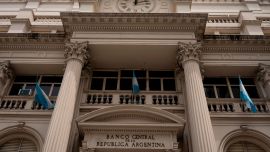One of the various mysteries of the trade agreement with the United States announced a week ago with such fanfare in Washington by the new Foreign Minister Pablo Quirno and US Secretary of State Marco Rubio is the degree to which it has almost vanished from public discourse in just a few days, with not even opposition politicians or lobbies of the most affected sectors or trade unions standing to lose jobs seemingly having much to say. Does last month’s midterm triumph (greatly assisted by the financial bailout from the other side of the agreement) give President Javier Milei such authority that nobody dares to challenge him?
It is also true that while plenty was announced last week, nothing was signed with those who see the devil in the detail awaiting the fine print (and they could be in for a long wait without ruling out U-turns further down the road). Donald Trump’s modus operandi is such an incarnation of governance via chaos theory to confuse everybody else that the agreement will need to take a more final form to gain credibility. Furthermore, this move is as much a global as bilateral initiative, in tandem with Ecuador, El Salvador and Guatemala at regional level alongside negotiations with much of the rest of the world – a Chesteronian technique of hiding a leaf in a forest when the real motive could be a tactical retreat from protectionism as a domestic response to growing inflation anxieties and judicial challenges as much as bolstering a Latin American ally.
Those who see the agreement as possessing at least enough substance to be submitted to Congress tend to interpret it as the price tag for last month’s bailout – Trump never has the least intention of signing an agreement where he is on the losing side. In numbers the agreement boils down to 12 unilateral concessions on the Argentine side as against one from the United States with six joint commitments. Given the degree to which this agreement opens up Argentina’s economy, it cannot come soon because it will need to be preceded by the tax, labour law and other structural reforms to reduce the costs of domestic producers and make them more competitive.
What was communicated by Quirno and Rubio was basically an agreement to agree along with some conceptual clarifications but no numerical specifics while Congress has the last word in both countries. Yet even at that level various branches of the economy feel unease, including even the farming sector, the country’s most competitive. First and foremost is the local pharmaceutical industry, which has more political tentacles than most businesses – for decades its scorn for intellectual property rights has kept it competitive on domestic markets but their disregard is viewed in the United States as piracy when over half of the world’s research & development can only be met by the US giants. The Quirno-Rubio agreement would price already expensive drugs out of the market by cancelling billions of dollars in savings, a concern for not only local labs but also Argentine pensioners. The powerful car industry, currently anchored in the auto pact with Brazil granting tariff-free symbiosis via Mercosur, is also rocked by US advances in the agreement. Even agriculture will be giving more than it takes, opening up beef and poultry markets in exchange for Washington quadrupling its beef import quota from Argentina (yet to be confirmed).
When it comes to world trade, China is the elephant in the room which receives no direct mention in the agreement but clauses committing Argentina to action against state companies and subsidies and to the restriction of imports produced in violation of international labour norms would seem to have one particular economic superpower especially in mind. It remains to be seen how hard Argentina’s third trade partner (Washington) is prepared to push to displace its second (Beijing) – any drive against soy exports to China would certainly be treading on a very big toe.
None of the above is intended to be an argument for protectionism against free trade – Argentina has been one of the world’s most closed economies for far too long and the potential for US investment opened up by this agreement is enormous, whatever its trade components – but simply to say that it’s complicated. One thing for certain – as mentioned above, the structural reforms awaiting the new Congress will have to precede this agreement materialising into reality if the latter is to be anything remotely resembling a partnership between equals.


















Comments